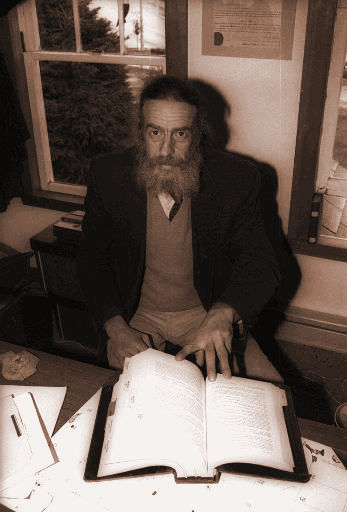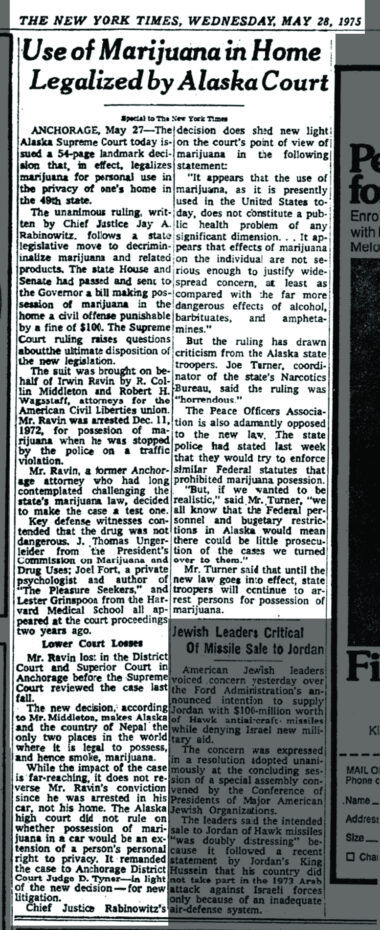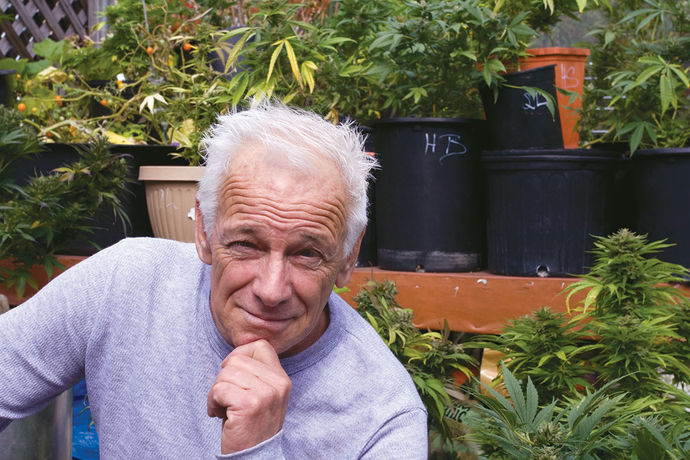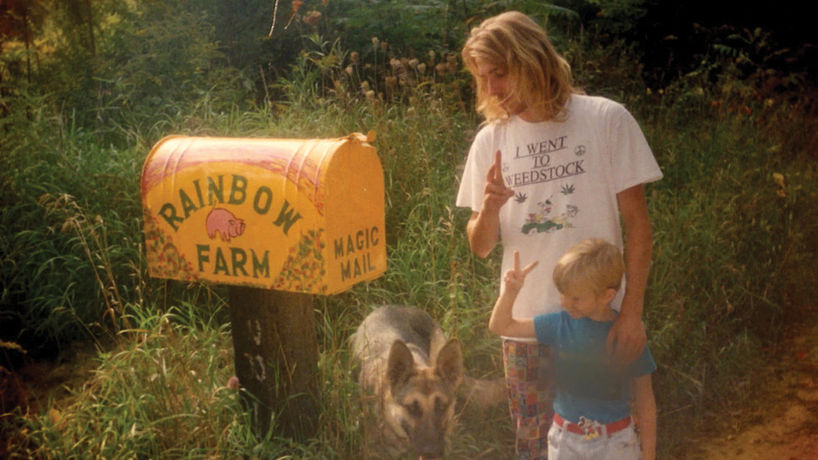If you asked the average American which states were the pioneers of Cannabis legalization, they’d likely answer California and Colorado. But in reality, Oregon was actually the first state to decriminalize marijuana way back in 1973, followed soon after by Alaska in 1975. And unlike the former states, who legalized Cannabis through voter initiatives, both Oregon and Alaska did so through their state legislatures. In Alaska’s case, that law was undoubtedly influenced by an iconic act of civil disobedience by the man who would become known as the grandfather of the state’s marijuana movement: Irwin Ravin.
That’s So Ravin
Irwin Ravin was born on June 20, 1939 in Newark, New Jersey, and grew up in a traditional Ashkenazi Jewish home in the nearby suburb of Hillside.
Irwin, it seems, developed a fondness for marijuana at an early age – as evidenced by the recollection of his younger sister Deena, who claimed that he was growing his own plants by the time he was 16 years old. At age 20, he dropped out of college to join the Army, serving an 18-month stint in Korea (1959-1960). After his tour was up, Ravin returned home to complete his education: first graduating from Rutgers University, then NYU Law School. Upon passing the bar exam, he went to work for his uncle Morris as a law clerk at the family firm of Ravin and Ravin. But after the Newark race riots in July 1967, Ravin chose to flee the dangers of the inner city; within a month, he moved his wife and two young sons up to Fairbanks, Alaska.
It was there in Fairbanks that he met a fellow pot-smoking attorney (and assistant district attorney) named Robert Wagstaff. A jazz fan originally from Kansas City, Wagstaff had been smoking reefer since 1961. The pair hit it off – eventually opening a law practice together in Anchorage and getting high together often. It was during one of their smoke sessions in late 1972 that the duo began plotting to overturn what they viewed as the state’s unjust Cannabis law. The political conditions there seemed ripe for change: Earlier that very year, Alaskans had amended their state constitution to include an explicit right to privacy (Article 1, Section 22). Plus, the justices on the state’s Supreme Court were among the youngest and most liberal in the country. All the partners needed was the right test case to mount their legal challenge. Luckily for them, fate would soon intervene on their behalf.
On the evening of December 11, 1972, Ravin was pulled over for a broken tail light in Anchorage. It was just a routine traffic stop, but it provided him the perfect opportunity and he decided to act: Knowing he had two joints in his coat pocket, he refused to sign the ticket and deliberately got himself arrested – allegedly even holding up the weed in his hand until he was taken into custody.
“It wasn’t even my car,” he recalled in a 1990 Homer News article. “I made them arrest me, and then gave them the pot.”
Ravin’s arrest provided him and Wagstaff the perfect vehicle to attempt to overturn the existing Cannabis law.
Ravin v. Alaska
Ravin was charged with violating Alaska Statute 17.12.010 – possession of Cannabis for personal use. At a District Court hearing in early May 1973, Wagstaff (and another lawyer they brought on by the name of R. Collin Middleton) filed a motion to dismiss the charge. Ravin’s team put forth a two-pronged legal strategy: First, they argued that in light of the constitution’s right to privacy guarantee, there was no legitimate state interest in prohibiting possession of marijuana by adults for personal use; second, they argued that marijuana’s classification as a dangerous drug was irrational and therefore denied Ravin due process and equal protection under the law.
Before long, Ravin’s case was being championed by both NORML (of which Wagstaff was now the organization’s state coordinator) and the ACLU, whose Anchorage chapter president Sally Coeghom expressed her support to the press.
“The circumstances of arrest have no relevance to the issue,” Coeghom said in an article in the Fairbanks Daily News-Miner (on, of all days, April 20th). “The state cannot constitutionally declare a substance illegal unless it is proven to be harmful. The clear evidence is that marijuana is harmless, period.”

NORML flew in several expert witnesses to testify on Ravin’s behalf, including esteemed Harvard psychiatrist (and godfather of medical marijuana) Dr. Lester Grinspoon, who attested to the relative harmlessness of the plant. Together, Ravin, NORML and the ACLU maintained that the burden of proof lied with the government to show that there was a “compelling public interest” in prohibiting the drug. Unsurprisingly, the state didn’t agree. On Nov 17, 1973, the District Court ruled that the law was indeed constitutional and denied their motion. Undeterred, Ravin’s team appealed to the Superior Court (which upheld the prior decision), and then finally to the Alaskan Supreme Court.
The Supreme Court took up their case on October 16, 1974. After hearing two hours of oral arguments and testimony from the expert witnesses, the court adjourned to deliberate. Six months later – on May 27, 1975 – they announced their unanimous verdict.
Regarding the first question, the court concluded that Alaskan’s right to privacy “would encompass the possession and ingestion of substances such as marijuana in a purely personal, non-commercial context in the home.” That landmark decision made the Alaska Supreme Court the first and only court in the history of the United States to recognize a constitutional right to privacy in regard to Cannabis. Granted, those protections were limited to within an individual’s private residence – but this was nevertheless a monumental victory for the pro-Cannabis and libertarian causes.

“It wasn’t about pot – it was about the right to privacy,” Ravin told the Homer News in October 1990. “It was a philosophy of freedom from government intrusion into personal life.”
Regarding the second issue, as to whether or not marijuana’s prohibition was irrational: The court – citing the separation of powers – deferred to the legislature to address it … which, it just so happened, they were in the process of doing.
Decrim Win
Serendipitously, while Ravin’s case was being deliberated by the court, the Alaska State Legislature had begun moving forward on a new Cannabis reform bill. Sponsored by young Republican state senator Terry Miller of Fairbanks, SB 350 decriminalized possession of up to one ounce of marijuana for adults 18 years or older, reducing it to a mere civil infraction punishable by a fine of $100 or less. Fearing that its passage might dissuade the court from ruling in their favor, Wagstaff actually testified against the bill – a position that justifiably drew ire from his NORML colleagues. Nevertheless, on May 16 – just 11 days before the court’s ruling – the bill passed, and with Governor Jay Hammond’s declination to neither sign nor veto it, became the law of the land.

Whether the legislation had any effect on the court’s decision or vice versa is uncertain … what was certain, however, was that the personal use, possession and cultivation (thanks to a subsequent ruling by the state attorney general) of Cannabis had effectively become legal in Alaska. What’s more, this new law essentially nullified the charge against Ravin, who was now basically off the hook.
“He won,” his sister was quoted as saying, “and he became a Paul Bunyan, a folk hero up there.”
Legacy of Legalization
In the years that followed, Cannabis law in Alaska was liberalized even further: first in 1982, when the $100 fine was removed, and again in 1986 when the maximum possession amount was raised to four ounces in the home and one ounce in public. Then in 1990, in a remarkable reversal of course, Alaskans passed Ballot Measure 2 which re-criminalized possession of small amounts of Cannabis – making it a misdemeanor punishable by a $1,000 fine or up to 90 days in jail. But thanks to the precedent set by Ravin v. Alaska, that initiative was ultimately struck down as unconstitutional.
As for Ravin, he eventually retired from the legal profession and ended up driving a taxi in Homer. On April 7, 2010, he suffered a heart attack and was sent to Providence Alaska Medical Center in Anchorage where he died four days later. He was 70 years old.
Though Irwin Ravin didn’t live to see Cannabis fully legalized for adult use in Alaska in 2014 (another Measure 2), he did live long enough to see it legalized for medicinal use in 1998 (Measure 8), and was also around to see his landmark ruling survive another challenge in 2003 (in the case of Noy v. State). More importantly, though, Ravin’s legacy as an Alaskan icon of personal liberty is as enduring as the great Denali.










